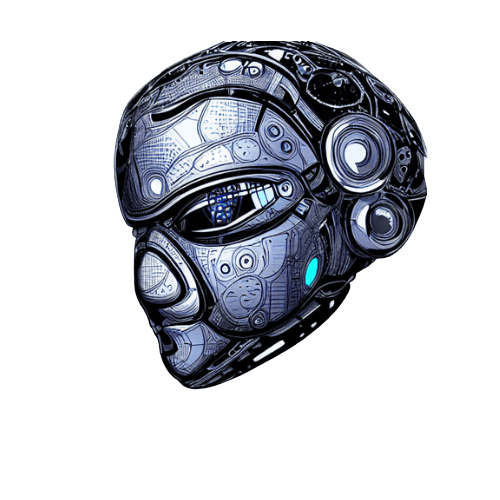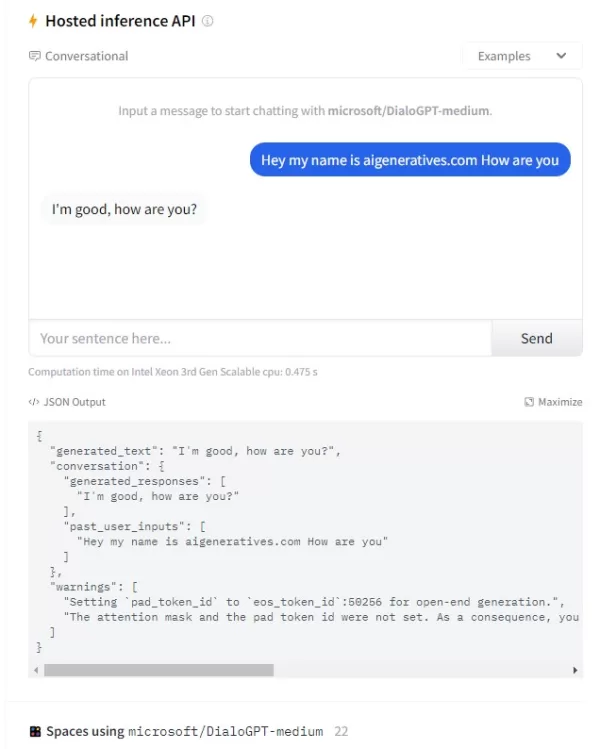DialoGPT is a powerful and innovative AI model using generative pre-training that can improve conversational AI models. By understanding how this technology works and understanding its various applications, you can make the most of this powerful tool and turn it into a valuable asset for your organization.
DialoGPT stands for (dialogue generative pre-trained transformer)
What is DialoGPT?
DialoGPT is a powerful AI model based on OpenAI’s GPT-2 architecture that uses generative pre-training to improve conversational AI models.
It can be used for a wide range of applications such as chatbot development, natural language processing (NLP) tasks, and question answering.
With this technology, you can train your own custom model with the help of pre-trained weights from DialoGPT.
How Does it Work?
DialoGPT works by utilizing a technique called generative pre-training, which is based on the principles of unsupervised learning.
During the pre-training process, DialoGPT uses large datasets to learn characteristics about language and record them in weights.
These weights are then transferred to a model that is more specific to the task that it needs to perform, such as chatbot development. With this knowledge, the model can more effectively understand and respond to conversational input.
A State-of-the-Art Large-scale Pretrained Response generation model (DialoGPT)
DialoGPT is a SOTA large-scale pretrained dialogue response generation model for multiturn conversations.
The human evaluation results indicate that the response generated from DialoGPT is comparable to human response quality under a single-turn conversation Turing test. The model is trained on 147M multi-turn dialogue from Reddit discussion thread.
What Are the Benefits of Using DialoGPT?
DialoGPT offers many advantages when it comes to developing conversational AI models.
It helps improve response accuracy, reduce the amount of resources required for training, and enable faster development.
Additionally, it allows for natural language understanding within a range of topics and offers the ability to adapt dialogue quickly and effectively.
With DialoGPT, developers can create more intuitive chatbots that respond naturally to their environments.
What Are the Limitations of DialoGPT?
Despite its many advantages, DialoGPT does have some limitations that should be considered.
For example, it relies heavily on pre-training and can be complex to train for specific tasks.
Additionally, it has difficulty maintaining long-term context and is limited in the range of topics it can understand.
Finally, it requires a large amount of data to train effectively, which can be a challenge to obtain.
Whar Are Some Examples Of Uses?
Some examples of using DialoGPT include:
- Chatbot development: It can be fine-tuned on a dataset of conversational text and then used to generate responses in a chatbot, making the conversation with the bot more natural and human-like.
- Language Translation: It can be fine-tuned on a dataset of parallel sentences in different languages, and then used to generate translations.
- Text summarization: It can be fine-tuned on a dataset of long documents, and then used to generate summaries of the text.
- Question answering: It can be fine-tuned on a dataset of questions and answers, and then used to generate answers to new questions.
- Dialogue generation: It can be fine-tuned on a dataset of dialogues and then used to generate human-like dialogues.
- Text-based game AI: It can be fine-tuned on a dataset of game-related text and then used to generate the in-game dialogue, character descriptions, and other text-based elements.
- Automated writing: It can be fine-tuned on a dataset of writing styles and then used to generate creative writing, such as articles, stories, or poetry.
How to Implement DialoGPT in Your Applications?
After training your DialoGPT model, you will be ready to use it.
To deploy a DialoGPT-based AI application, you have two major options.
You can either use a cloud-based platform such as Google’s Dialogflow or Amazon’s Lex, or you can create your own custom framework using open source code libraries like TensorFlow and Keras. Depending on the complexity of your project, one of these solutions may be better for you than the other.
Try it now.



Reviews
There are no reviews yet.